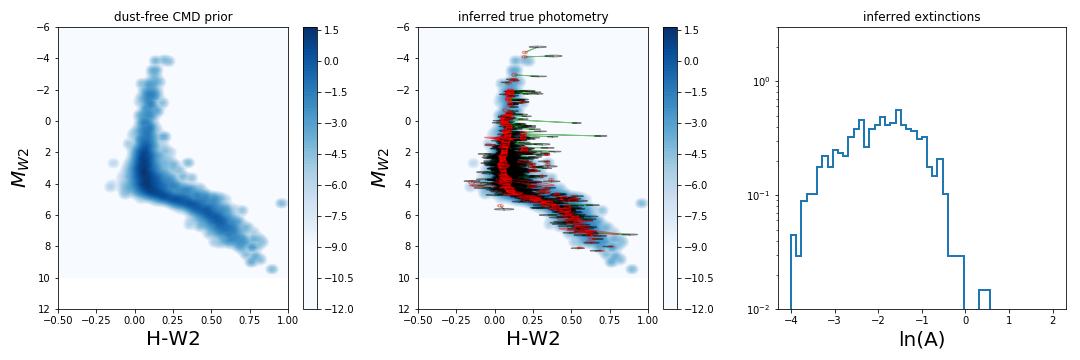
I have been working with Andy Miller (Columbia) on building a 3D dust map of the Milky Way galaxy using a Gaussian process prior on 1e9 stars from Gaia. Of course we always want to solve all of astronomy, and infer the dust map and the color magnitude diagram simultaneously. But for a first step we want to model a dust-free CMD, infer individual dust estimates for stars, and then build the GP model on these individual estimates. Here I’m showing a first attempt at our dust-free CMD model, built using XD (a gaussian mixture model that can include heteroskedastic noise written by Jo Bovy) on GAIAx2MASSxWISE stars with sfd dust estimates < 0.005 and parallax S/N > 20. Some issues that pop out to me: (1) I find it very strange that all of Gaussians look so isotropic, (2) having such a tight constraint on the dust also minimizes support of the prior, especially for the brightest stars, and (3) although XD is a nice non parametric model, it feels like there are better options, something that is more inclusive of our prior knowledge of the CMD, i.e. that stars are tightly correlated in this space along a line with some thickness. We’re looking into using a normalizing flow, which is a non linear transformation of a Gaussian PDF, something that Miles Cranmer (Princeton) has been thinking about. Here I’m showing the log likehood of the CMD prior (left panel), some intitial posterior estimates in red (center panel), and the inferred dust estimates (left panel).